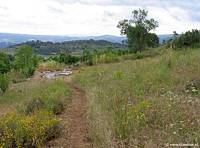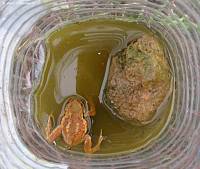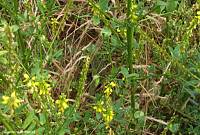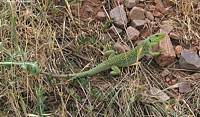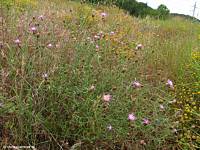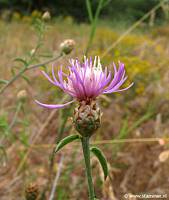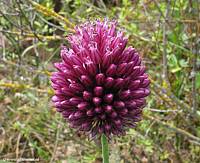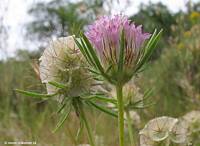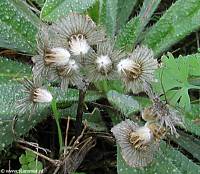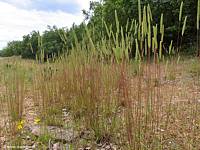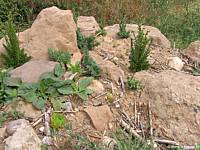|
|
Nature
Switched On
|
|
|
introduction |
2007 June 16 & 17, Saturday and Sunday
|
The pond seen from the north-west. |
|
These plastic bottles with
some attractive rainwater in it can be deadly traps.. Saturday 17:48 |
||
|
I detected more vertebrate life: this beautiful Ocellated lizard (Timon
lepidus) had made itself almost indistinguisable in the
vegetation of Melilotus altissimum. To get a better
impression of this impressive animal I added a photograph I took 2
years ago somewhere else in Aragon. It can measure more than 80 cm
from head to tail and is the largest lizard in Europe. It is quite
common in the Western Mediterranean.
|
||
|
An Ocellated lizard hidden in Melilotus altissimum. Saturday 12:58 |
||
| Ocellated lizard. Photograph taken in Olalla, Aragon on 12 June 2005 15:44. | ||
|
|
||
|
Purple star thistle, with some
specimen present at the entrance of the terrain. Sunday 13:58 |
||
|
Centaurea alba on the higher central terrace. Looking north-west. Sunday 13:46 |
Close-up of Centaurea
alba. Sunday 13:48 |
|
|
Two of these wild onions were flowering: they are Round Headed Leeks (Allium sphaerocephalon). They are so striking that I plan to harvest some of the new onions that are formed at the base of the stem and plant them in other places. |
||
|
Round Headed Leek on the middle central terrace. Saturday 13:11 |
||
|
This flower, Lomelosia stellata, I had already seen flowering last autumn but now they could be seen in greater numbers on different places on the terrain. The photograph of the peculiar seeds was taken last October. |
||
|
Lomelosia stellata
on the lowest terrace in the east. Saturday 11:47 |
||
|
Seeds of Lomelosia stellata. Photograph taken in October 2006 on the highest terrace. |
||
|
Phleum phleoides is a another characteristic species of xerothermic grasslands from the Festuco-Brometea class. It had now developed its typically red stems that were completely green in May.
|
||
|
Phleum phleoides on the higher western terrace. Looking south. Saturday 12:27 |
Close-up of Phleum
phleoides. Sunday 14:06 |
|
|
The plantations of the rock garden were doing fine. Absolute leader
is Pale Stonecrop (Sedum sediforme ) which is
especially vigorous, followed by White Stonecrop (Sedum
album) I have to keep these areas free from 'weeds' of course in order to give the Stonecrops a chance and let the stones stand out. The colour of the stones (sandstone) is almost exactly the same as the soil which may not come as a surprise since they come from the same place. |
||
|
The rock garden in the extreme north corner. Saturday 12:17 |
||
|
introduction
|
|
